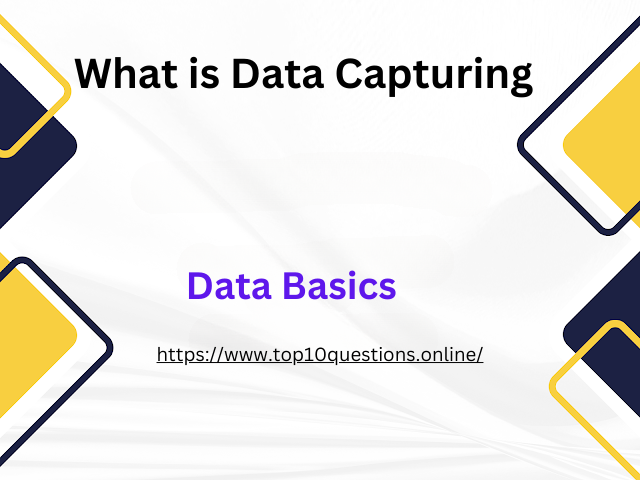What is Data Capturing 2024
Data capturing made simple! Learn the fundamentals and significance of gathering data efficiently. Dive into the world of information with Data Basics.
 |
| What is Data Capturing 2024 |
What is Data Capturing?
Data capturing is the process of collecting and recording information in a digital format for further analysis and storage. It involves gathering various types of data, such as text, numbers, images, or audio files, from different sources and transforming them into a usable format. This crucial step in the data lifecycle ensures that raw information is converted into a structured database that can be easily accessed and analyzed. Data capturing can involve manual entry by individuals or automated processes using technology such as barcode scanners, OCR (optical character recognition) software, sensors, or IoT devices.
The basics of data capturing lie in understanding the type of information being collected and determining the most efficient method for converting it into digital form. It requires careful consideration of data accuracy, completeness, and timeliness to ensure the reliability of the captured information. With advancements in technology, data capturing has become more streamlined and accurate through methods like machine learning algorithms that can extract valuable insights from unstructured datasets. Ultimately, effective data capturing enables organizations to make informed decisions based on reliable information that has been accurately captured and stored.
Data Capturing Process?
Data capturing refers to the process of collecting and recording information in a digital format for further use and analysis. It involves capturing data from various sources such as paper documents, electronic forms, invoices, and other business documents. The data is converted into a digital format using specialized software or tools, ensuring accuracy and reliability.
This process is crucial for businesses as it helps in creating databases, generating reports, and making informed decisions. Data captured usually includes customer details, sales transactions, financial records, and inventory information. It helps in maintaining organized records and streamlining operations.
Moreover, data capturing plays a vital role in automation processes by extracting important information from different sources effortlessly. This enables companies to save time and resources while enhancing efficiency. Overall, effective data capturing is essential for leveraging the power of data-driven insights and unlocking potential business opportunities.
Pros:
1. Data capturing allows for the collection of valuable information from various sources.
2. It helps in making informed decisions based on accurate and up-to-date data.
3. Data capturing can improve efficiency by automating the process of collecting and organizing information.
4. It enables organizations to track trends and patterns over time for better planning and forecasting.
5. Capturing data can lead to improved customer service through better understanding of customer preferences and needs.
Cons:
1. Data capturing can be time-consuming, especially when dealing with large volumes of information.
2. There is a risk of errors in data capturing, which can lead to inaccurate analysis and decision-making.
3. Privacy concerns may arise when capturing personal or sensitive information without proper consent or security measures.
4. The cost associated with implementing data capturing systems and tools can be significant for some organizations.
5. Overreliance on captured data may lead to overlooking qualitative aspects that are not easily quantifiable.